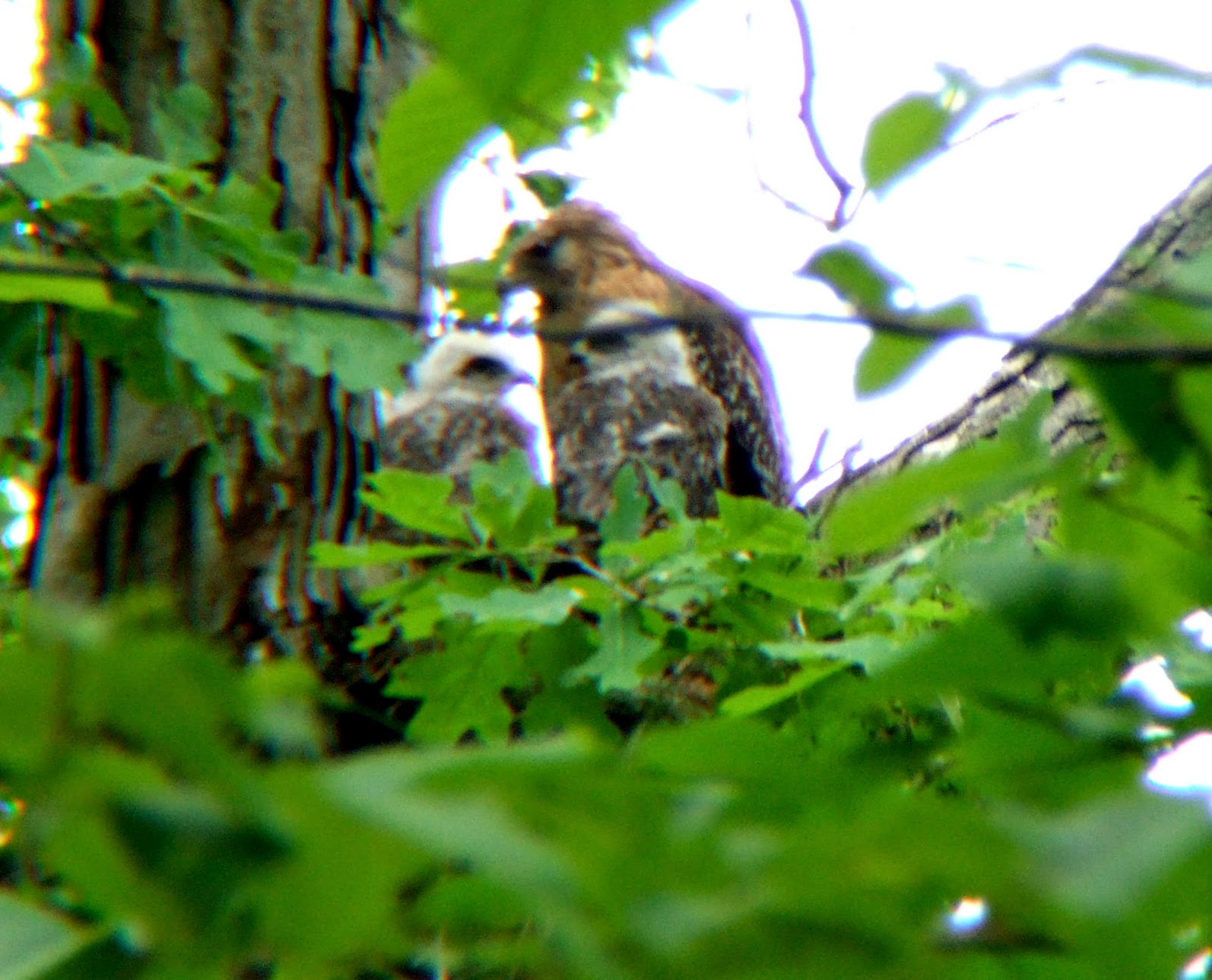 |
| Hackberry witches' broom |
Winter exposes some defects in leafless trees such as
witches' broom on hackberry trees. This condition is produced by the combined attack of
a powder fungus and a wormlike eriophyid mite,
Eriophyes celtis. The result is a mass of branches all springing from a single point on a branch.
Eriophyes species are usually unique to their specific plant.
E. celtis lives only on hackberry,
Celtis occidentalis, sucking plant juices from the leaves.
The female mite overwinters in the buds, then produces eggs in the spring which go through two nymph stages before reaching maturity. The adult
Eriophyes sp. mites are unique with only two pair of legs versus four pair in all other arachnids. Other species of
Eriophyes mites produce a
wide variety of tree leaf and stem galls.
The powder fungus,
Sphaerotheca phytoptophila, is found on all hackberries, and it may be a cause of witches' broom or possibly just infest the weakened branches.
Cultivated since 1636, hackberries can reach 100 feet in time, and were planted in some regions to replace elms after the Dutch elm disease. There are several new disease resistant strains. In the wild, they produce fruits eaten by birds and other animals. The witches' broom doesn't affect the health of the tree and occurs primarily on trees growing out in the open. While a homeowner might be annoyed, I look at it as just another fascinating variant of the food chain of trees.
Some types of
witches' broom are caused by insects, viruses, fungi, mites, aphids or parasitic mistletoe. Occasionally they are caused by a genetic mutation, usually producing only one broom on the tree.
While a minor annoyance on hackberry trees, witches' broom on other plants can destroy a farm.
NPR just reported on a fungus called witches'-broom that attacks the chocolate industry. It is specific to cacao trees, the source of our beloved chocolate. It has wiped out whole cacao farms and in the Bahia region of Brazil, cocoa production dropped nearly 75 percent. They reported that "Brazil went from being the world's third-leading cocoa producer to being
the 13th."
 |
| Cocoa witches'-broom - USDA |
There is some hope for the chocolate industry, a new treatment that fights a fungus with a fungus. The
USDA reports early success with several fungal diseases of the cacao using
Trichoderma fungus that attaches to and literally eats the witches'-broom fungus.
Like most things, there can be some good with the bad. Designer trees and dwarf conifers have been created by enterprising gardeners who have grown them from witches' broom cuttings or seeds from the cones on brooms. These miniature plants can vary in size, shape, color and texture. Some grow only 3-6 inches a year.
More on miniature conifers from witches' broom at this New York Times story.


 Buckeye buds are my favorite, large and brightly colored. They are the first buds to open and leaf out in the spring. They also are the first trees to lose their leaves, usually in mid August. These are good buds to study, both from their size and their ability to mature when the stems are cut and kept in water. They also make a seasonal table decoration.
Buckeye buds are my favorite, large and brightly colored. They are the first buds to open and leaf out in the spring. They also are the first trees to lose their leaves, usually in mid August. These are good buds to study, both from their size and their ability to mature when the stems are cut and kept in water. They also make a seasonal table decoration.























%2Blichens%2B-%2B1.jpg)
%2Blichens%2B-%2B5.jpg)

%2Blichens%2B-%2B2.jpg)



